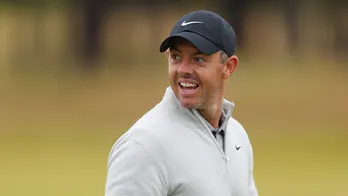Winning is always fun, but my losses teach me more: Sathiyan
Returning from Tokyo, G Sathiyan watched a match that was gnawing at his insides. He played it, then he played it again. It was the match that marked his debut at the Olympic stage, where he seemed to be cruising with a 3-1 lead against Hong Kong’s Lam Siu Hang and yet lost the next three games.

And that was that; Sathiyan’s much anticipated Olympic debut was done. He was out. Back home, he wanted to feel the hurt.
“The fire increases when it hits you that little bit harder,” Sathiyan said.
It’s been three months since that setback and Sathiyan’s fire is burning bright. In this period, the 28-year-old has bagged three international titles on the pro tour across three categories: the WTT Budapest mixed doubles title with Manika Batra in August, the ITTF Czech International Open singles crown later that month and the WTT Tunis men’s doubles title alongside Harmeet Desai on Saturday.
The last among them was the sternest and the most satisfying for him. Not only did the tournament comprise a comparatively tougher field, but also saw Sathiyan make deep runs in all three events. The world No. 37 entered the singles quarter-finals, beating Alvaro Robles in the Round of 32 after a couple of losses against the Portuguese. In mixed, the Sathiyan-Batra pair reached the semi-finals before losing to the French top seeds Emmanuel Lebesson and Jia Nan Yuan, the Tokyo Games semifinalists, after taking a two-game lead.
The icing on the cake—as Sathiyan termed it—came in the men’s doubles where he and Desai defeated the world No. 7 Hungarian pair of Nandor Ecseki and Adam Szudi from two games down in the semi-final and the French combo of Lebesson and Alexandre Cassin 3-1 in the final. It earned Sathiyan a maiden international men’s doubles title and a first quarter-final appearance in a WTT (World Table Tennis) tournament in singles.
“It’s one of the best tournaments I’ve played after a long time in terms of my level,” he said. “I’m very happy that I could turn the tables after Tokyo. I didn’t expect it to happen so fast.”
Resilience pays off
Sathiyan had left no stone unturned for the Tokyo Games in his training and preparation amid the pandemic. Then came the quick fall. However, instead of going into a shell in its aftermath, he was determined to break the shackles.
“I am someone who has always delivered my best after a bad loss or phase. Be it when I came back into the Indian set-up in 2014 after going through a bad time during my engineering days or when I won the Belgium Open after I couldn’t make it to the 2016 Olympics squad,” Sathiyan said. “It’s always more difficult to beat me the second time.”
Those hours spent dissecting the Tokyo defeat from the jaws of victory with his coach S Raman in Chennai were not just about emotions.
“Sure, I felt bad. But that is something that drives me further. Winning is always fun, but I believe my losses teach me more. It makes me curious about how I can get better.
“So I took a deep dive into the match, not just the mental part but on what went wrong technically apart from the emotional aspect of it being my first Olympics. I sat with my coach, mental conditioning coach and physio and gave my inputs on what I felt about it. We got down to work immediately, and I could see I was getting better: playing more agile and using the speed factor in my game to my advantage,” Sathiyan said.
Sathiyan believes the more he has competed through the year, the better he has felt on the table, and the three titles have only reiterated that. Two of them might have come in doubles, but it’s going to be an integral part in India’s medal prospects at the back-to-back Commonwealth Games (CWG) and the Asian Games next year for the doubles and team events.
Sathiyan was part of the men’s team that won the historic bronze at the 2018 Asian Games and the gold at the CWG the same year, while also pocketing the doubles silver with Sharath Kamal and mixed bronze with Batra in Gold Coast. With the veteran Sharath and Sathiyan still the torchbearers in singles, Sathiyan felt it is imperative to look at other doubles combinations for the team events. The Sathiyan-Desai victorious pair thus checked a box.
The stakes go higher in mixed, which is the only doubles event at the Olympics. With the Sharath-Batra duo running its course in Tokyo, Sathiyan and Batra have already set their sights on Paris, with key pit stops in Birmingham and Hangzhou next year.
“It (mixed) is going to be as important as singles,” Sathiyan said. “It’s about building the partnership, trying to understand each other’s games and how we respond in crunch situations. We’ve started our mixed journey on a high note. It’s going to be fun. If we can continue playing at this level, we could get into the top 6-8 (mixed doubles rankings) before Paris. That’s our aim,” he said.
Sathiyan will continue playing mixed doubles with Batra apart from singles in the two WTT events in Slovenia before the World Championships from November 23 in Houston, where he will also compete in doubles with Sharath. “I’ll go all out there again,” he said.
Disclaimer: The copyright of this article belongs to the original author. Reposting this article is solely for the purpose of information dissemination and does not constitute any investment advice. If there is any infringement, please contact us immediately. We will make corrections or deletions as necessary. Thank you.







